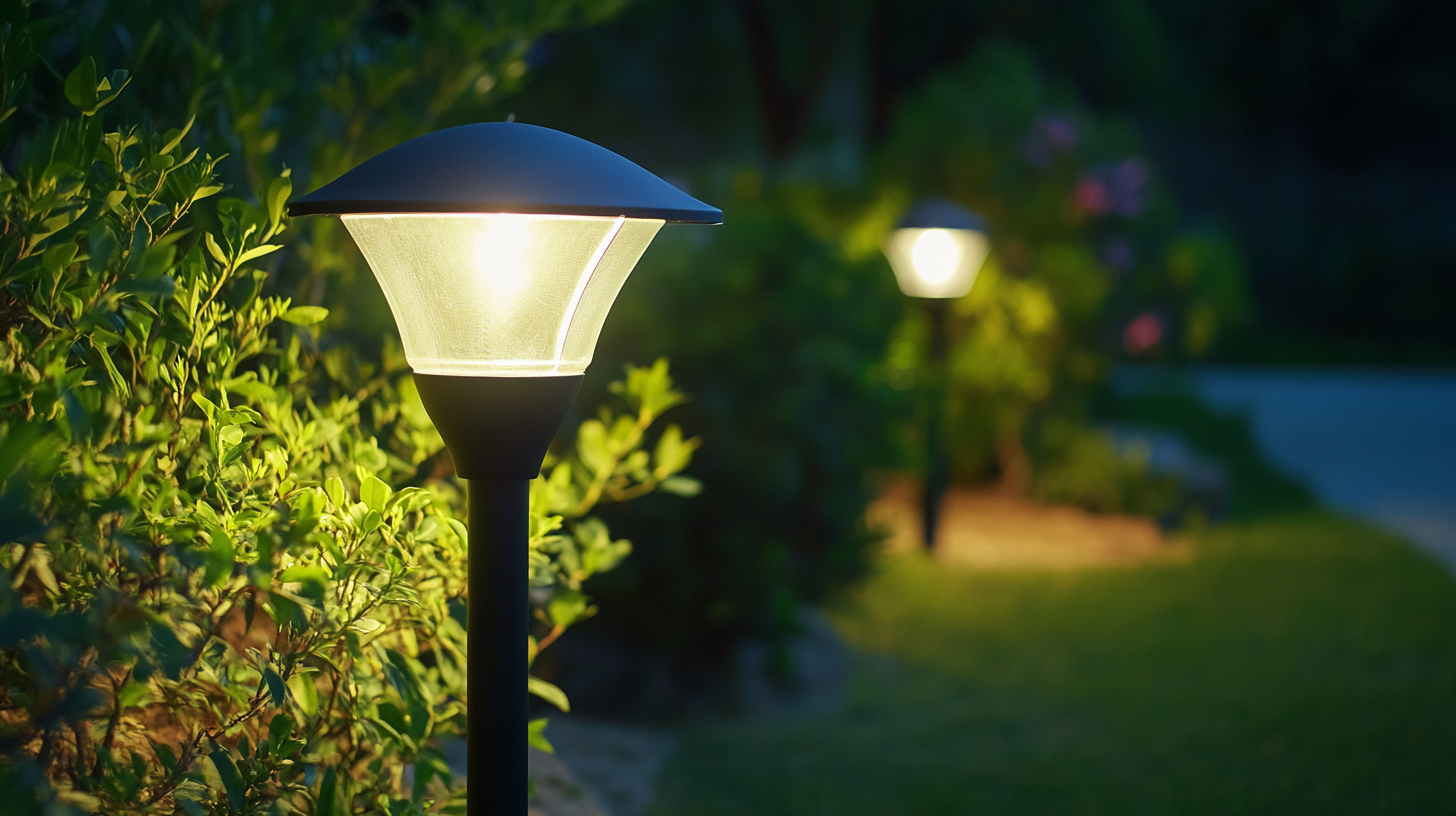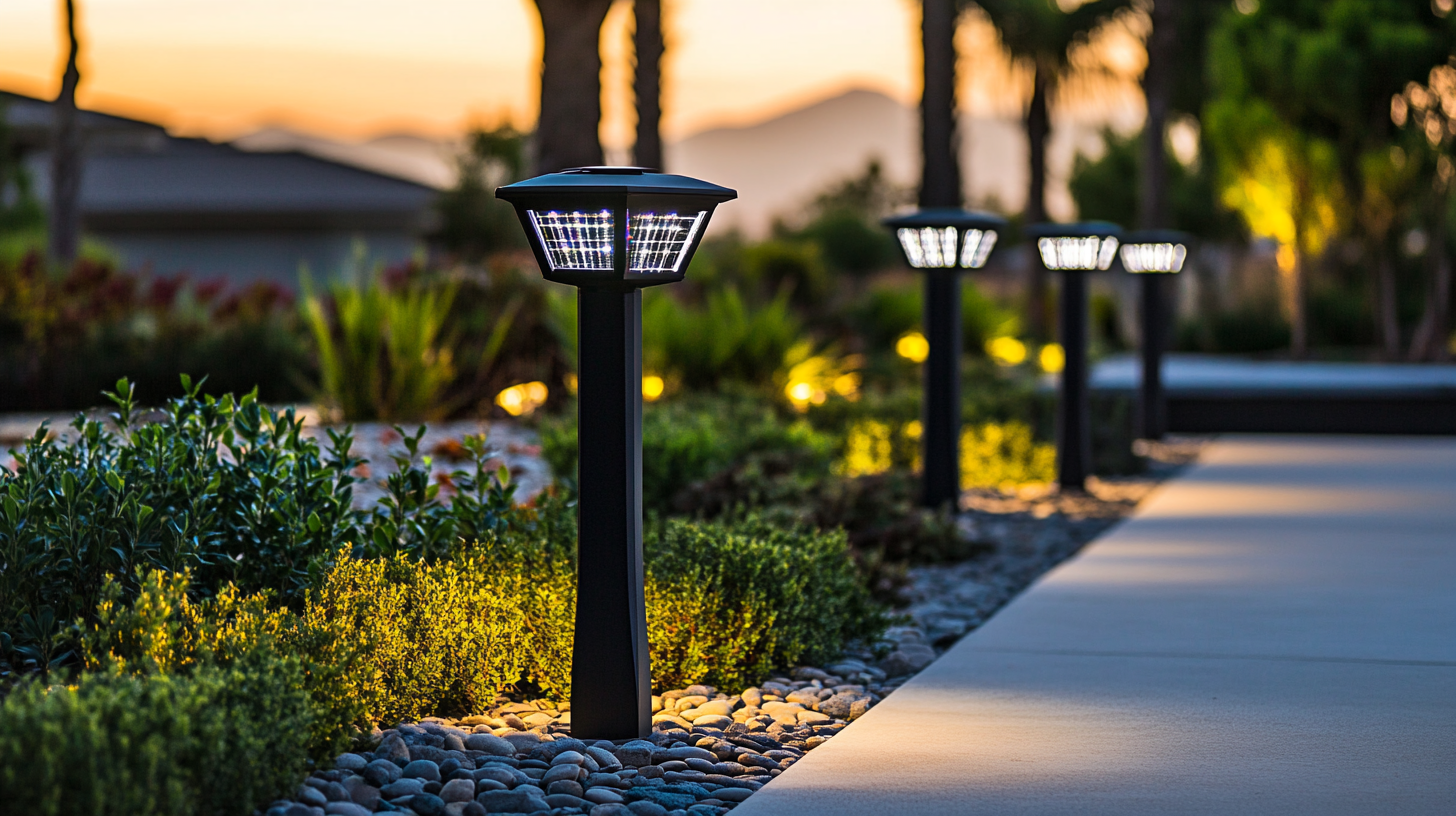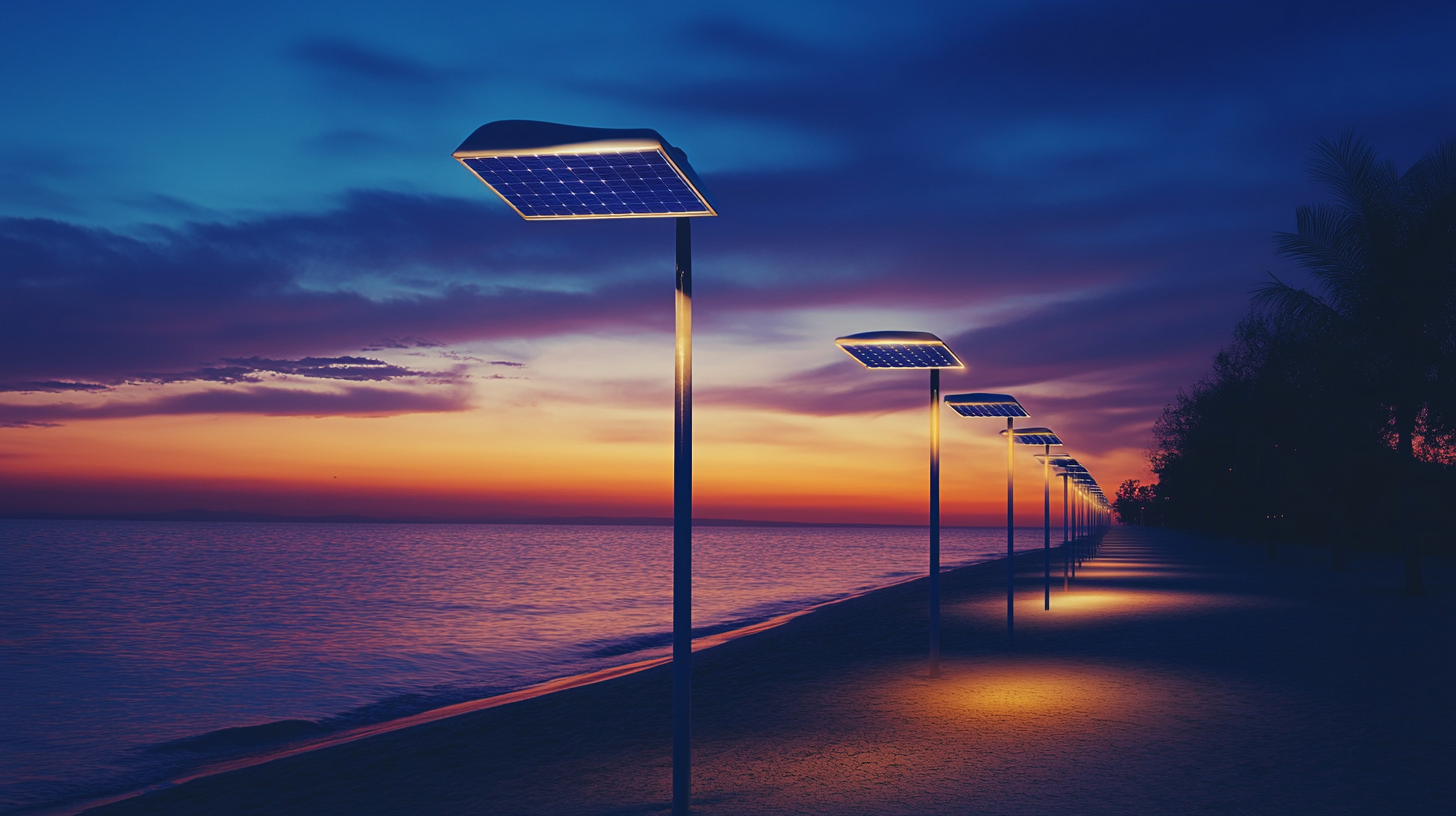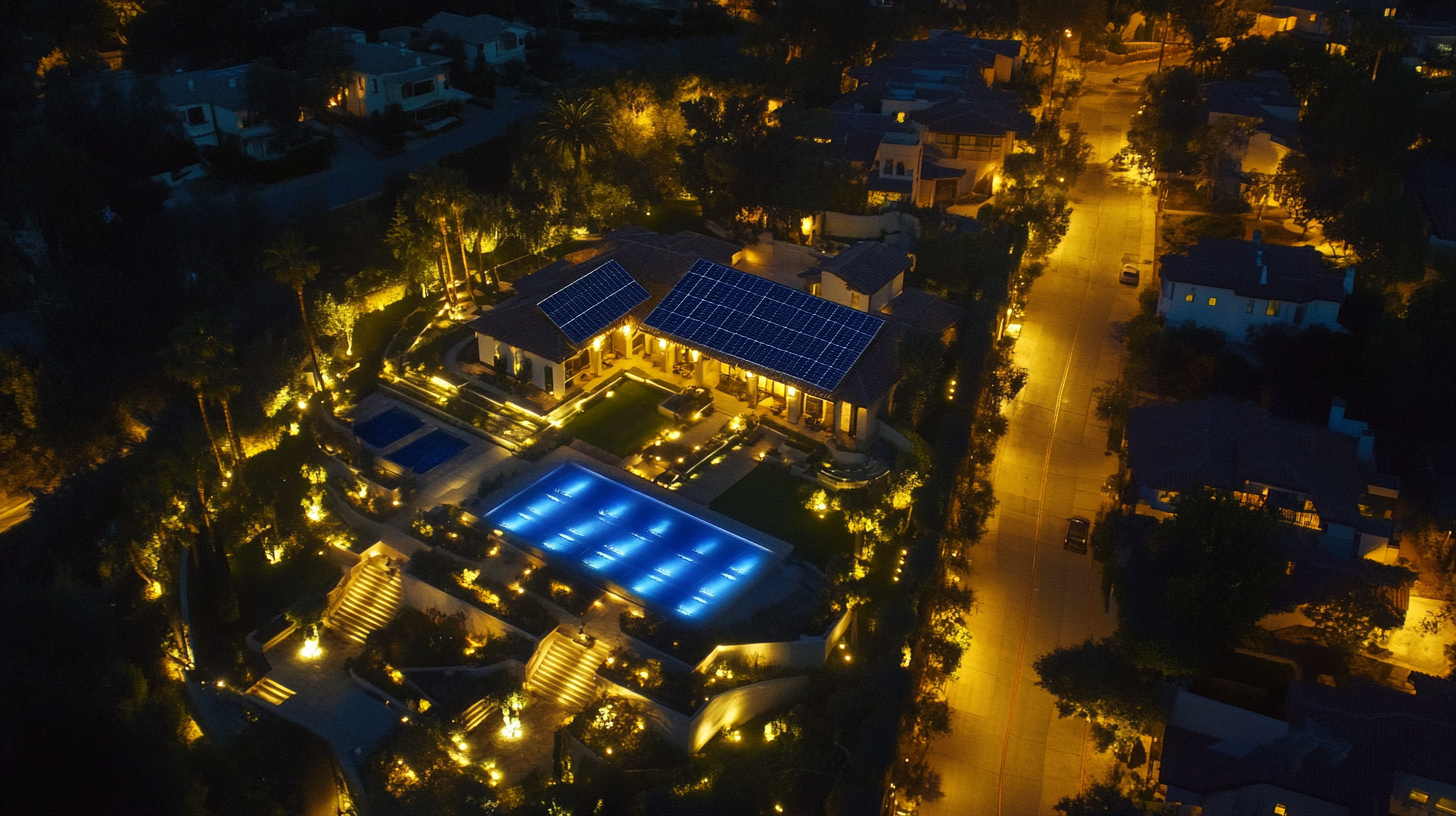Innovative Solar Landscape Lighting Trends Shaping the Future of Outdoor Illumination
As outdoor spaces continue to evolve, the demand for innovative and sustainable lighting solutions has never been greater. Solar Landscape Lighting is at the forefront of this transformation, providing a unique blend of functionality and aesthetic appeal. With advancements in technology and design, solar lighting solutions are not only enhancing the beauty of gardens, pathways, and patios but are also contributing to a greener planet. This awakening to the benefits of solar energy is inspiring homeowners, designers, and landscapers alike to reimagine outdoor illumination in ways that were once thought impossible.
The current trends in Solar Landscape Lighting reflect a growing consciousness towards sustainability, energy efficiency, and smart technology integration. From elegant, minimalistic designs that seamlessly blend with nature to cutting-edge smart lighting systems that offer customizable features, the industry is experiencing a renaissance. In this blog, we will explore the latest innovations in solar landscape lighting, examining how they are shaping the future of outdoor environments and providing guidance on how to incorporate these trends into your own spaces for maximum impact and sustainability.

Emerging Trends in Solar Landscape Lighting: A Quantitative Overview
As outdoor spaces continue to evolve, the demand for innovative solar landscape lighting has soared. A quantitative overview reveals that the global solar lighting market is projected to reach significant milestones, reflecting increasing consumer interest in sustainable and energy-efficient solutions. This rise is driven by advancements in technology, making solar lights not only more efficient but also affordable. Enhanced solar panels and energy storage have led to products that can illuminate larger areas for longer durations, with an average increase in brightness output by over 30% in recent years. Moreover, aesthetics play a crucial role in the adoption of solar landscape lighting. Consumers are now leaning towards design-forward solutions that complement their outdoor decor. Trends show an increase in customizable lighting options, allowing homeowners to select features such as color temperature and brightness levels. Additionally, smart solar lights, equipped with motion sensors and app connectivity, are becoming prevalent. Data indicates that smart features can reduce energy consumption by up to 50%, further appealing to environmentally conscious users. Landscape architects are also embracing these trends, integrating solar lighting into their designs for parks, gardens, and commercial spaces. The rise of eco-friendly projects has bolstered the demand for solar solutions, leading to innovative applications like solar path lights and decorative fixtures that enhance the usability of outdoor areas. The fusion of functionality, beauty, and sustainability is undoubtedly shaping the future of outdoor illumination, making solar landscape lighting an essential component of contemporary landscape design.

The Environmental Impact of Solar Lighting: Reducing Carbon Footprint by 80%
The shift towards solar landscape lighting has become more than just a trend; it is a vital component in the quest for sustainable outdoor illumination. By harnessing the power of the sun, these innovative lighting solutions significantly reduce electricity consumption and, consequently, the carbon footprint associated with traditional lighting systems. Studies suggest that utilizing solar lighting can decrease carbon emissions by up to 80%, making a substantial impact on the environment.
In addition to the drastic reduction in carbon emissions, solar lighting systems offer a myriad of benefits that contribute to their growing popularity. They are equipped with advanced technologies such as motion sensors and smart controls, ensuring they light up only when necessary, further enhancing energy efficiency. Moreover, solar lights require minimal maintenance and installation, as they operate independently from the grid, making them a practical choice for both residential and commercial outdoor spaces.
As cities and communities increasingly prioritize sustainability, the adoption of solar landscape lighting represents a transformative step towards greener practices. Integrating these systems into public parks, pathways, and private gardens not only elevates the aesthetic appeal of outdoor environments but also fosters a collective commitment to reducing environmental impact. This shift towards solar solutions illustrates a proactive approach to lighting, demonstrating that innovation and sustainability can coexist harmoniously.

Smart Technology Integration in Solar Landscape Lighting Systems
The rapid advancement of smart technology is transforming solar landscape lighting systems, creating innovative solutions that enhance outdoor illumination. According to a report by Research and Markets, the global smart outdoor lighting market is projected to reach $6.0 billion by 2025, growing at a CAGR of 18.2%. This trend is primarily driven by the integration of IoT (Internet of Things) capabilities, which allow these systems to be remotely monitored and controlled, leading to increased efficiency and energy savings.
Smart solar landscape lighting systems not only harness renewable energy but also come equipped with sensors and automated features. These systems can adjust brightness levels based on ambient light conditions, ensuring optimal illumination while conserving energy. For instance, companies like Philips and Sylvania are implementing advanced motion detection technology in their solar products, which can reduce power consumption by up to 60% when no movement is detected. Additionally, LED technology plays a crucial role in maximizing energy efficiency, with some models offering lifespans exceeding 50,000 hours, greatly reducing the need for frequent replacements.
The integration of smart technology also enhances user experience. Mobile applications allow homeowners to control their landscape lighting from anywhere, set schedules, and receive real-time updates on the system's status. A recent survey from the International Energy Agency indicates that 40% of consumers are interested in smart lighting solutions that provide convenience and energy management capabilities. This growing consumer demand is prompting manufacturers to continually innovate, ensuring that smart solar landscape lighting remains at the forefront of outdoor illumination trends.

Cost-Effectiveness Analysis: Long-Term Savings of Solar vs. Traditional Lighting
The shift towards solar landscape lighting is not merely a trend but a smart financial decision for homeowners and businesses alike. As energy costs continue to rise, the allure of solar-powered lighting lies in its ability to harness the sun's energy, which translates to significant savings over time. Traditional outdoor lighting systems often come with high installation and maintenance costs, not to mention ongoing electricity bills that can add up. In contrast, solar lights incur no electricity costs after installation and require minimal maintenance, making them a more cost-effective option in the long run.
Moreover, the initial investment in solar lighting is increasingly justified by the advancements in technology that enhance efficiency and longevity. High-quality solar panels and LED lights have dramatically improved the performance of solar fixtures, allowing them to generate and store more energy. This means that, over their lifespan, solar lights often outlast traditional systems, leading to lower replacement and operational costs. Additionally, many solar solutions come with warranties that protect the investment further.
Incorporating solar landscape lighting not only contributes to lower energy bills but also provides an eco-friendly alternative, aligning with the growing emphasis on sustainability. By choosing solar, homeowners can significantly reduce their carbon footprint while enhancing the beauty and safety of outdoor spaces. The combination of long-term savings, reduced maintenance, and environmental benefits makes solar lighting a compelling choice for modern outdoor illumination needs.
The Future of Design: Aesthetic Innovations in Solar-Powered Outdoor Illumination
In recent years, the demand for aesthetically pleasing outdoor spaces has surged, driving innovations in solar-powered landscape lighting. According to a report by the Solar Energy Industries Association, the U.S. solar market has grown by over 170% in the past five years, highlighting a significant shift towards renewable energy solutions. This growth is influencing design trends, as consumers increasingly seek lighting solutions that marry functionality with visual appeal.
One notable trend in solar landscape lighting design is the integration of smart technology. Devices equipped with sensors and connectivity features allow homeowners to control their outdoor illumination remotely, enhancing both convenience and energy efficiency. A study from Grand View Research anticipates that the smart outdoor lighting market will reach $12.11 billion by 2027, showcasing a clear consumer preference for modernized, intelligent outdoor lighting solutions that not only enhance security but also improve the overall aesthetic of outdoor spaces.
Furthermore, eco-friendly materials and unique design elements are becoming prominent in the solar lighting industry. Designers are experimenting with various styles, ranging from minimalist to vintage, to cater to diverse tastes. A report from Research and Markets indicates that the global market for LED outdoor lighting is set to reach $16.3 billion by 2025, underlining the increasing consumer focus on energy efficiency without compromising design. With innovations such as customizable colors and shapes, solar landscape lighting is not just functional but also a crucial element of outdoor aesthetics, setting a new standard for future designs.
